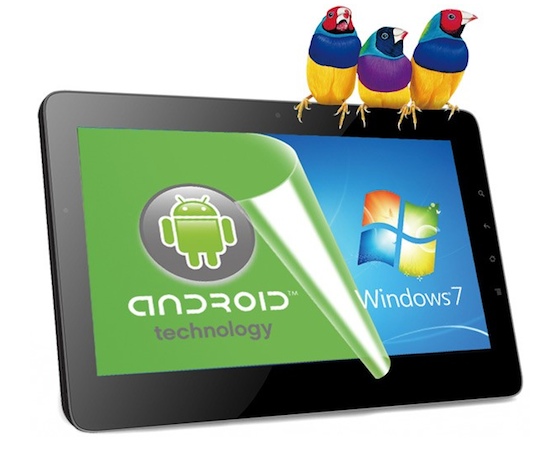Dual OS could dilute Windows dominance, if Microsoft doesn't kill it first


The PC industry isn't doing so well. Sales have dramatically slumped, despite the industry’s efforts to tempt consumers with Windows 8 tablets and transforming touchscreen laptops. But next week, the Consumer Electronics Show in Las Vegas may be the launching pad for a new push — a new brand of computer that runs both Windows and Android.
Sources close to the matter tell The Verge that Intel is behind the idea, and that the chipmaker is working with PC manufacturers on a number of new devices that could be announced at the show. Internally known as "Dual OS," Intel's idea is that Android would run inside of Windows using virtualization techniques, so you could have Android and Windows apps side by side without rebooting your machine.
If that idea sounds familiar, it might be because you've seen it before. In June, Samsung announced the Ativ Q, a Windows 8 hybrid laptop that could launch a full-screen virtualized instance of Android by tapping an app on the homescreen. Coincidence or no, the name of that app was Dual OS. Asus also appears to be building a Dual OS computer: the name popped up in an FCC filing for a new tablet, which the company also appears to be teasing in a recent YouTube video.
It's worth noting that Dual OS may not be the final name for the initiative, though: when analyst Tim Bajarin first reported on the idea at Time, he called it "PC Plus."

As a result, Moorhead says, Microsoft may actually be trying to convince PC manufacturers to cancel their plans mere days before the Las Vegas show. Microsoft has a lot of leverage: it could withhold marketing budgets, or even hurt a manufacturer's bottom line by stripping away discounts on the copies of Windows 8 that come preinstalled on new PCs.
"Just imagine what this is like right now," says Moorhead. "You can just imagine the pitch: anything we pay money for or reduce your sticker license" for is off the table if Microsoft objects.
Google, meanwhile, could restrict access to the official Google Play app store, Gmail, Google Maps, and other proprietary applications. Even though the core Android operating system is free for manufacturers to use, Google has the power to cripple Dual OS devices if it feels that they would fragment the Android ecosystem. While Amazon was able to create its own app store for its Android-based Kindle Fire tablets, such restrictions have been a death sentence for other devices — including 2011’s ViewSonic ViewPad 10Pro, which actually ran Windows and Android in a very similar fashion to what Intel is proposing this year.

That ViewSonic tablet highlights perhaps the greatest reason for skepticism of the Android on Windows idea: it's been trotted out so many times before without making a major difference. For a few years now, Windows users have been able to run Android apps on their computer using a piece of software called BlueStacks, which has gotten progressively better. The present version does, in fact, offer access to the Google Play Store when searching for apps. But Bluestacks has already been bundled with computersseveral times now to little effect. So far, we've heard nothing to suggest that Intel and PC manufacturers are pursuing the idea any more aggressively than they have in the past.
Besides, Dual OS could easily be designed to fulfill another, more pressing role: generating headlines in Vegas next week. Companies are pressured to present bold new innovations at these events — even if innovation doesn't actually occur on a 12-month cycle. It just so happens that combining multiple operating systems in a single device is a surefire way to generate attention.

No comments:
Post a Comment